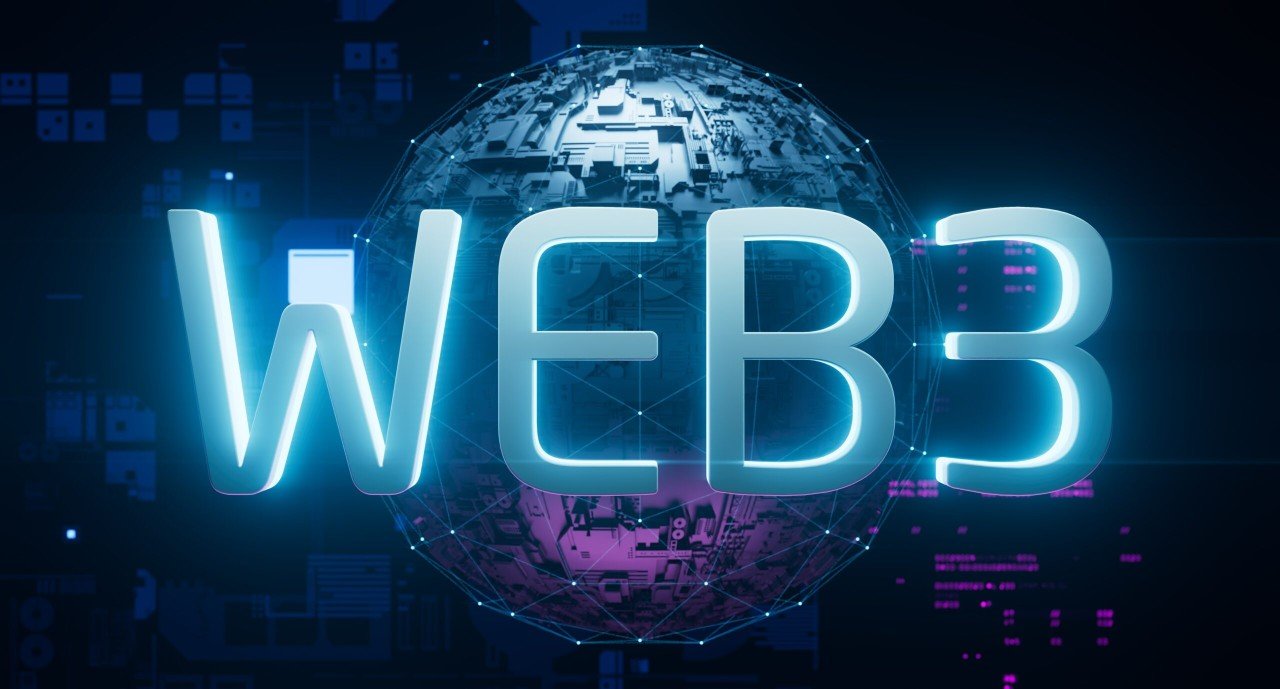The internet has evolved in phases. What started as a static information highway known as Web1 has grown into the dynamic, user-centric experience of Web2. Now, a new paradigm is emerging: Web3. Touted as the next major shift in the way we interact with digital content, Web3 promises decentralization, transparency, and true ownership in the digital world.
As we step into this new era, understanding what Web3 is—and more importantly, what it isn’t—is critical for individuals, developers, and businesses alike. In this article, we will explore the fundamental principles of Web3, its components, its real-world applications, and the challenges it faces as it moves toward mainstream adoption.
The Evolution: From Web1 to Web3
To appreciate Web3, it’s useful to look at its predecessors.
Web1 (1990s–early 2000s):
Often called the “read-only” web, Web1 consisted mainly of static websites. It was a one-way street where information was published and consumed, but user interaction was minimal. Webpages were hosted on individual servers and managed by companies or institutions. There was little to no user-generated content.
Web2 (mid-2000s–present):
With the rise of social media, dynamic websites, and cloud computing, the internet entered the Web2 phase. This “read-write” web empowered users to contribute content. Platforms like Facebook, YouTube, and Twitter thrived by aggregating user data and monetizing it through targeted advertising. However, this came with trade-offs—centralized control, privacy concerns, and data monopolies.
Web3 (Emerging):
Web3, in contrast, aims to create a decentralized, peer-to-peer internet. It is powered by blockchain technology and protocols that promote transparency, user control, and distributed governance. Instead of relying on centralized intermediaries, Web3 envisions a digital world where users own their data, identities, and digital assets.
Defining Web3
At its core, Web3 is about decentralization. Unlike Web2, which relies heavily on centralized servers and third-party services, Web3 leverages blockchain and distributed ledger technologies (DLTs) to enable direct, trustless interactions between users and services.
Some of the defining characteristics of Web3 include:
- Trustless and permissionless systems: Anyone can participate without needing approval from a central authority.
- Native digital assets and cryptocurrencies: Blockchain-based tokens facilitate transactions and governance.
- Self-sovereign identity: Users own and control their digital identities without needing a central provider.
- Interoperability: Applications built on Web3 protocols can interact more seamlessly than traditional siloed services.
- Token-based economics: Incentives align through the use of tokens, which reward users for participation and contribution.
Key Technologies Behind Web3
Web3 is not a single technology but an ecosystem of interrelated components. Below are the major building blocks that form the foundation of the Web3 stack:
1. Blockchain
Blockchain is a decentralized and immutable ledger that records transactions across a network of computers. It underpins most of the Web3 infrastructure by providing transparency and eliminating the need for a central authority.
Popular blockchain platforms that support Web3 development include Ethereum, Solana, Polkadot, and Avalanche. Ethereum, in particular, has become the go-to platform for Web3 due to its support for smart contracts—self-executing code that runs on the blockchain.
2. Smart Contracts
Smart contracts automate complex workflows without relying on intermediaries. In the Web3 context, they enable decentralized applications (dApps) that operate transparently and autonomously.
For instance, a decentralized finance (DeFi) app can use smart contracts to offer lending and borrowing services without a bank acting as a middleman.
3. Cryptocurrencies and Tokens
Digital currencies like Bitcoin and Ethereum are integral to the Web3 ecosystem. They serve as a medium of exchange, a store of value, and a mechanism for governance and incentives.
Beyond native coins, there are utility tokens, governance tokens, and non-fungible tokens (NFTs). These assets enable access to services, community voting, and digital ownership of unique items like art, music, and virtual land.
4. Decentralized Storage
Web3 requires new forms of data storage that do not rely on traditional cloud services. Decentralized storage platforms such as IPFS (InterPlanetary File System) and Arweave offer resilient, censorship-resistant solutions where users can store files in a distributed manner.
5. Digital Identity and Wallets
Users interact with Web3 via crypto wallets such as MetaMask, WalletConnect, and Phantom. These wallets store private keys and act as digital identities, allowing users to access applications, sign transactions, and manage their assets securely.
In a Web3 world, your wallet is your identity—it replaces usernames and passwords and gives you full control over your data and digital interactions.
Real-World Applications of Web3

Web3 is not just a theoretical concept—it is already being used in various industries. Some of the most prominent applications include:
1. Decentralized Finance (DeFi)
DeFi is perhaps the most successful application of Web3 so far. Platforms like Uniswap, Aave, and Compound offer financial services—trading, lending, borrowing—without traditional banks or brokers. DeFi enables global, 24/7 access to financial tools and often offers more competitive returns than traditional systems.
2. NFTs and Digital Ownership
NFTs have revolutionized the concept of ownership in the digital age. Artists, musicians, and game developers can create verifiable digital assets that users can own, trade, and display. The NFT market has seen explosive growth, with projects like Bored Ape Yacht Club and CryptoPunks gaining mainstream attention.
3. DAOs (Decentralized Autonomous Organizations)
DAOs are blockchain-based organizations governed by smart contracts and token holders. They enable collective decision-making without a centralized leadership structure. Examples include MakerDAO, which governs the DAI stablecoin, and Gitcoin DAO, which funds open-source projects.
4. Gaming and the Metaverse
Web3 gaming incorporates token-based economies where players truly own in-game assets. Games like Axie Infinity and Decentraland let users earn tokens, buy land, and participate in governance. These games are early prototypes of the metaverse—a persistent, shared virtual space powered by blockchain.
5. Social Media and Content Platforms
Web3 is also reshaping how content is created and monetized. Platforms like Lens Protocol and Mirror allow creators to publish and earn without intermediaries. Unlike traditional social networks, these services give creators more control over their data, revenue, and audience.
The Promise of Web3
Web3 carries immense potential to address some of the key issues plaguing the modern internet:
- Data ownership and privacy: Users have full control over their personal data, reducing the risk of leaks and misuse.
- Censorship resistance: Content cannot be easily removed or altered by central authorities.
- Open innovation: Developers can build on open protocols, fostering innovation and collaboration.
- Incentive alignment: Participants are rewarded for contributing to networks, creating fairer digital economies.
Challenges and Criticisms
Despite its promise, Web3 is not without challenges. Some of the most significant concerns include:
1. Usability
Web3 applications often have complex user interfaces and require a steep learning curve. Managing private keys, navigating gas fees, and understanding tokenomics can be daunting for newcomers.
2. Scalability
Many blockchains struggle to scale due to limitations in transaction speed and high fees. Ethereum, for example, has faced congestion issues during periods of high demand. Solutions like Layer 2 rollups and alternative chains are addressing this, but the problem persists.
3. Regulatory Uncertainty
Governments around the world are still grappling with how to regulate blockchain, cryptocurrencies, and digital assets. Varying policies can hinder adoption and create legal grey areas.
4. Security
While blockchains are generally secure, smart contracts can be vulnerable to bugs and exploits. Hacks and rug pulls have resulted in millions of dollars in losses across DeFi and NFT projects.
5. Centralization within Decentralization
Ironically, some aspects of Web3 remain centralized. For example, many dApps rely on centralized infrastructure providers like Infura or rely on a few wallet providers. Token-based governance can also lead to power imbalances if a small group holds the majority of voting tokens.
The Road Ahead
Web3 is still in its infancy. Just like the early days of the internet, there are growing pains, skeptics, and uncertainty. However, the vision it presents—of a more open, user-controlled, and equitable internet—is compelling.
As tools become more accessible, user interfaces improve, and regulatory frameworks evolve, Web3 may see broader adoption across industries and geographies. Startups, developers, and even major tech firms are actively exploring Web3 initiatives, signaling a strong belief in its long-term potential.
For businesses, it represents new models of engagement and revenue. For users, it offers more control and participation. For developers, it provides a frontier to build without gatekeepers.
Final Thoughts
Web3 is more than a buzzword—it is a paradigm shift. While there are legitimate criticisms and hurdles to overcome, the foundational principles of decentralization, transparency, and user empowerment are resonating around the world.
Whether it fully replaces Web2 or coexists alongside it, Web3 is redefining the boundaries of the digital experience. For those willing to explore, contribute, and innovate, this new era offers a wealth of opportunity—and it’s only just beginning.
If you’re passionate about the future of the internet, blockchain, or digital innovation, Web3 is a space you can’t afford to ignore.
